Home Canning-Important Do’s and Don’ts
It’s all about home canning today, and some important do’s and don’ts. If you’re like me, you love seeing all those jars lined up on our food storage shelves. I have to be a little more creative now that my home is so much smaller since Mark and I downsized. We no longer have a basement with shelves, but it’s all good.
My daughters and I still talk about all the food we canned as a family for so many years. We raised enough vegetables in our large garden to support our meal planning for a year. We were organic gardeners before organic became popular. There is something so gratifying about knowing you can produce enough food for your family for a year. Every year we planted, weeded, and harvested every vegetable we loved to eat. Then we started the process again year after year.
My sisters and I were blessed to have been taught how to can food by our mother. I took it to the next level because I had great soil in Logan, Utah, a half-acre lot, and the desire to grow my own food.
Years ago, I took classes from Utah State University’s extension service on how to safely can my harvest. Mark and I bought a water bath canner and a pressure canner.
USU taught me the skills I needed! Then I invested in a dehydrator, life is so awesome when you know how to safely preserve food for your family.
I decided to update this post today because I’m seeing things on social media that are not safe to do when preserving your food. I know there are groups called “rebel canners,” they are doing YouTube videos and posts that teach some unsafe canning tips.
This scares me, and it should scare every canner out there. Please don’t jeopardize the health of your family. Just because the pioneers canned food a certain way or grandma canned bacon, it’s not safe, my friends. There is way too much fat to can safely.
Dry canning in the oven is not safe either, the Ball or Kerr jars are not designed to can in a dry environment. I rely on respected and trusted sources for information when I’m putting my daily posts together.
I want my suggestions to be tested and proven approaches to food storage, emergency preparedness, and safe ways for families to prepare for disasters.
I want my readers to feel comfortable with what we discuss and know that no special “family traditional” approaches they hear from other sources are safe in all circumstances.
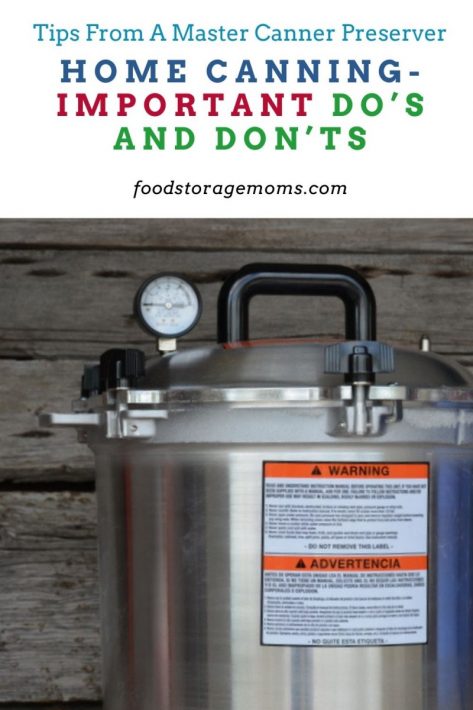
Master Canning & Preserving Certificate
I have canned food for at least 50 years now. I talked Mark into taking classes with me to get our Master Canning and Preserving Certificate a few years ago.
Yes, I know how to can, but I had never canned meat and I wanted to learn the new canning techniques. The class was awesome, we broke out into groups and canned a bunch of vegetables, fruit, meat, jams, and so much more.
I highly recommend you look into getting your certificate. Our food has changed over the years, so our canning techniques must change as well.
For instance, our tomatoes are not as acidic as they used to be. Therefore, we have to add some things we never used to add to our bottles when we can tomatoes to properly adjust for those changes in tomatoes’ chemical makeup.
Canning Do’s
- Always follow a reputable canning book, I recommend the following ones: USDA Canning and Ball Canning
- Assemble all of your equipment before you get started.
- Inspect all your jars, and discard all that have chips or cracks.
- Plan for more time than you may think, canning can’t be rushed.
- Remove the rings after 24 hours of cooling before storing.
- Please wash the jars before storing them after your canning is complete.
- When canning meats, keep the meat chilled and be ready to can/process them as quickly as possible.
- For best quality after harvesting fruits and veggies, can them within 12 hours (apricots, nectarines, peaches, pears, and plums should be ripened (1) or more days before canning them.
- Do check with your local state extension service to verify your correct altitude before starting, and adjust as needed to safely can your food.
- Can only what your family can eat in a year.
- Fill your jam or jelly jars leaving only 1/4 inch from the top of the jar.
- Fruits and vegetables should be canned leaving 1/2 inch space from the top of the jar for water bath canning.
- Low acid food canning requires you to leave 1-1/4 inches from the top of the jar when pressure canning.
- Yes, I use a plastic wand to remove the air in my jars by moving it around the inside of the jar. Then I wipe the top of the jar with a clean rag before placing the lid and ring on the jar, then tighten the jar, but don’t overtighten the ring.
- Do boil your lids submerged for ten minutes and keep them in hot water until ready to use. Correction by another Master Canner, Laura: Lids manufactured these days require only that they be wet, and dipping in cool water is sufficient. The sealing compound used today is different than what was used in the past, and boiling the lids for 10 minutes risks breaking down the sealing compound, leading to seal failure. The instruction is printed on the back of the box. Ball Website
- Please take your pressure canner and have the pressure gauge checked at your local state extension service at least once a year, preferably BEFORE you start to can.
- Replace the gasket in the lid of your pressure canner yearly, or as needed. Some pressure canners don’t have a gasket, such as my All American Pressure Canner.
- Fill your water bath canner halfway before adding jars. Make sure the water is 1-2 inches above the jars when the canner is filled with jars. (I prefer 2 inches).
- Put 2-3 inches of water in your pressure canner before adding any jars.
Canning Don’ts
- Don’t leave the rings on when you store your jars, they may not have been sealed, and leaving the ring on could prove to be fatal if bacteria gets into the contents.
- Don’t use grandma’s canning techniques because our food has changed in the last 35-50 years.
- Don’t retighten the rings after removing the jars from the canner.
- Do not tip jars as you bring them out of the canner, keep them straight up before and after processing.
- Obviously, you will not preserve diseased or sick animals.
- Steam canners are no longer recommended for safety reasons because of a lack of keeping temperatures consistent.
- Do not process your food in bottles in the oven, it is not safe.
- Do not can food in your pressure cooker, it is not a canner.
- Place processed jars on racks with dry towels underneath.
- Please ensure safe acidity in tomatoes, whole, crushed, or juiced. Add 2 tablespoons of bottled lemon juice or 1/2 teaspoon of citric acid per quart of tomatoes. For pints use 1 tablespoon of bottled lemon juice or 1/4 teaspoon of citric acid. You can also use 4 tablespoons of 5 percent acidity vinegar (I don’t like the flavor mixed in with my tomatoes) in each quart instead of using lemon juice or citric acid. Ball Citric Acid
- Please do not can milk, butter, bacon, eggs, or pumpkin puree. (pumpkin chunks are okay)
Oven Canning Is Not Safe
I quote from Penn State Extension: “Oven Canning is extremely hazardous. The oven canning method involves placing jars in an oven and heating them. In oven canning, product temperatures never exceed the boiling point because the jars are not covered. It is, therefore, not safe to use for low-acid products (e.g. meats, most vegetables) which require temperatures higher than 212°F.
Oven canning is not a recommended process. The glass jars are not designed to withstand the intense dry heat and may shatter in the oven. There is also the danger of breakage and burns while removing them from the oven.
Also, and most importantly, the transfer of heat into the jars is much slower through the air in an oven than in a water bath or a pressurized steam canner. The recipes that we recommend have been scientifically tested using a water bath or pressure canner and should be followed exactly as written.
Otherwise, there is a heightened risk of spoilage, or worse, survival of Clostridium botulinum spores, the source of deadly botulism poisoning.”
Final Word
I hope today’s post gets you excited to do some canning of your own. Life is good if we learn the skill of gardening and preserving our bounty. You can do this, I promise! Thanks for being prepared for the unexpected. May God bless this world, Linda

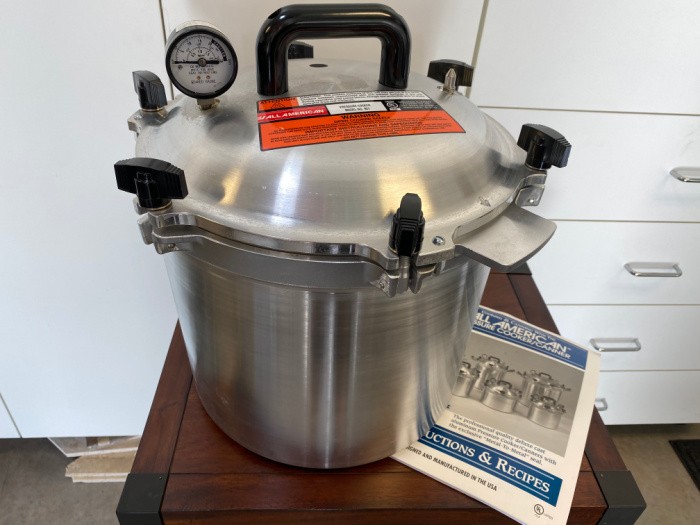

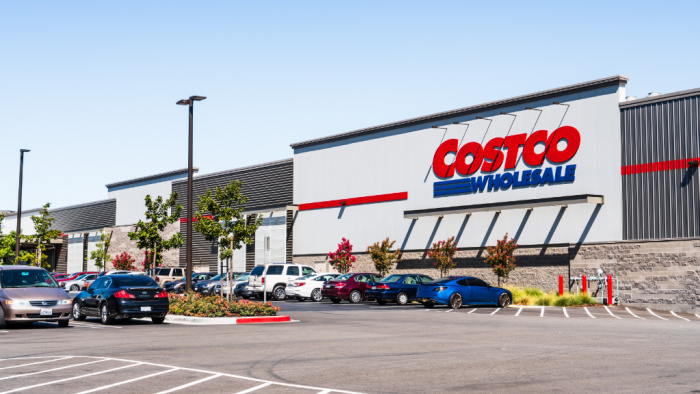
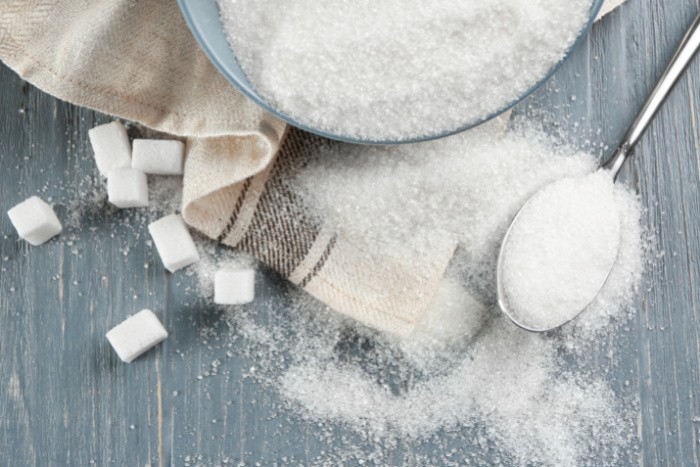
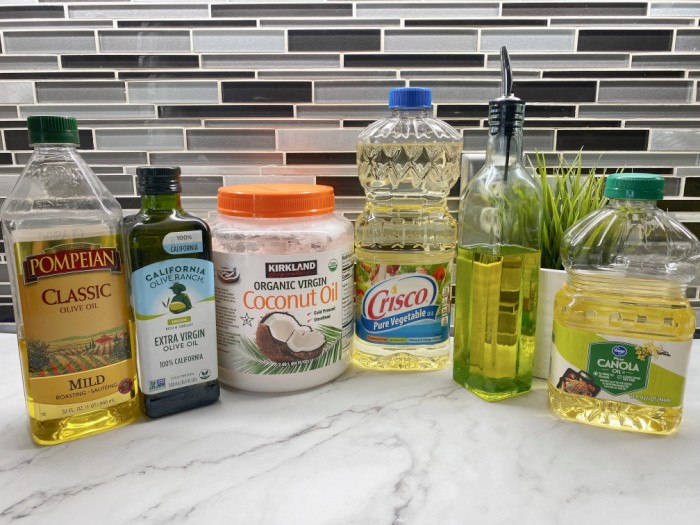

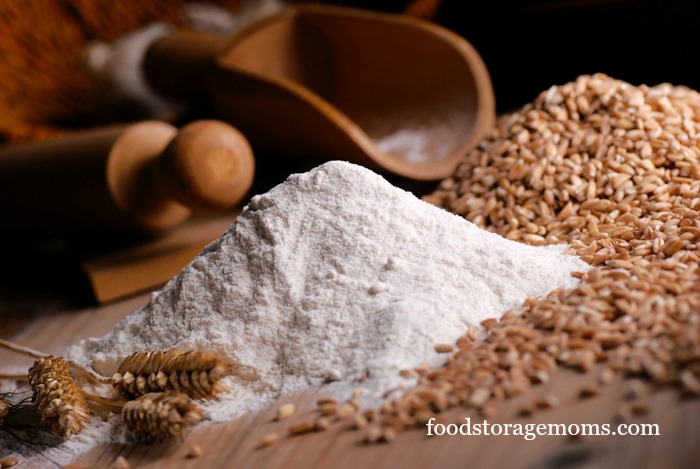
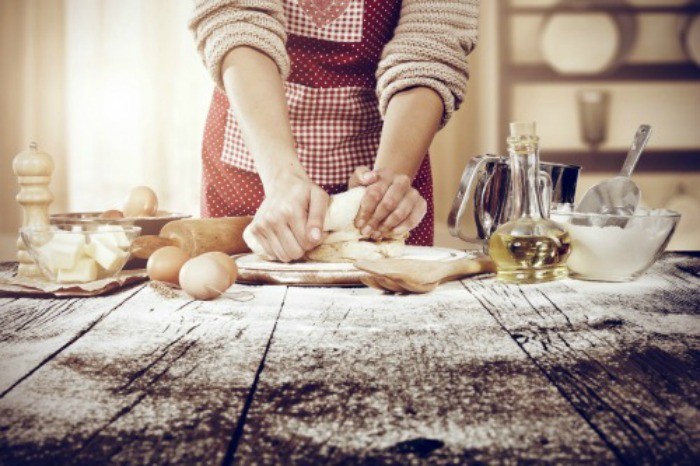













Master Food Preserver here. Great information in this post, except for one point. Lids manufactured these days require only that they be wet, and dipping in cool water is sufficient. The sealing compound used today is different than what was used in the past, and boiling the lids for 10 minutes risks breaking down the sealing compound, leading to seal failure. The instruction is printed on the back of the box. Thank you for the work you do!
Hi Laura, thank you so much for your comment! Correcting it right now. Linda
We have hurricanes occasionally so we work on having emergency supplies. What do you think about oven canning dry goods such as crackers, pasta, beans, etc? My sister does this by baking filled mason jars at 200 degrees for an hour, then putting seals and lids on. The purpose is to be sure no bugs survive and to keep crackers etc fresh for months. Is this safe? If not, what’s the best way to store dry goods long term to prevent stale food or getting weevils/bugs?
Hi Kay, I struggle with oven canning. I personally don’t oven can. I prefer to use my FoodSaver to store crackers. I store my pasta in 5-gallon buckets in the bags they came in. I also buy commercially processed pasta for longer term storage. I buy the commercially processed pasta so I can hopefully get 8 years of shelf-life. I do the same thing with beans. I would rather be safe than sorry. I also recommend learning how to make crackers for eating today and in case of an emergency. They are easier to make for some people than bread. Please think twice about oven canning. Stay healthy, Linda
Kay, I need to say that while your sister’s intent is good, it’s a lot of work and use of jars Plus storage space. Her intent is to kill potential bugs (from eggs)in her dry goods if I understood this right? It’s easier, might be cheaper, just to remove air using a vacuum sealer (Food Saver is the one I use.) Removing oxygen kills any larvae/eggs. As to cost: a vacuum sealer is about $125? I just saw one at Walmart like mine for $89. Came with a roll of bag material plus some zippered pouches. Here’s the thing: peas, beans, rice, pasta, dehydrated veggies can be vac sealed in just the size enough to make one meal or a few. The bags can be reused after slitting/un~zippered, time and time again. They can lay flat on a shelf or stood upright. They can even be left in original bags with a slit made in that, put in a vac seal bag, then air sucked out. Removing the air not only kills potential bugs but also stops natural degradation of the dried foods. A vacuum sealer is a better investment than using jars in my mind.
Hi Wendy, great option. Linda
Until the other day I had never heard of glassing eggs. Is this a real thing? And making dehydrated eggs then canning them is this a real thing and are these things safe?
Hi Angela, I called the Utah State Extension service on glassing eggs. They cannot recommend doing it. I know people who have farm fresh eggs and preserve them by glassing. I cannot recommend dehydrating eggs and then canning them. Linda
I agree with you. I would be worried the jars would break in the oven. Is commercially processed pasta what you can buy in the grocery store or is it a special long term storage product? Sounds interesting. Thanks!
Hi Kay, when I say commercially processed food storage I mean companies like Thrive Life or Honeyville Grain, Augason farms, etc. I buy everything online for my food storage needs. I would worry about the jars breaking too! Linda
I have three jars of home canned fruit that were in a car in san antonio tx for a week and the outside temp was over 100. is the canned fruit still good.
Hi Peggy, is the can still sealed? If there is any question, this is my motto: “when in doubt, throw it out”. I don’t want you to end up in the ICU, Linda
Excellent article Linda. I also have been seeing “pioneer” ways of pressure canning via internet. I’ve been canning for a very long time also and teach classes for my church members. I am not certified per say but have years of experience. I learned the hard way when I first began when real young and lost a lot of food because I could not getting the food to seal properly. I never gave up as I knew providing food for my family was important. But I have to say this. Now that I am older and tire much easier I have found a short cut that helps me. Instead of boiling water on the stove and pouring water into each jar, I add ingredient into jars, hot water and put into oven only to get the jars hot. I use the 400 degree method to make sure jars and water are hot to put into canner. I do not use it to pressure can, only to get jars hot and cut my time due to arthritis. My husband takes the jars out for me. After putting on lids and bands then they are processed. I have been using this method for some time now. Also I want to point out that cleanliness in the kitchen is very important, we do not want to spread bacteria. I see a lot of women wiping the mouth of jars with a kitchen towel, that can spread bacteria so I use bounty paper towels. This is just my method. Thanks again for the article, you always do a good job.
Judy, I’m glad you brought up the issue of keeping everything clean, including wiping the rims. Airborne bacteria simply love a towel that goes from jar to jar. I’m not sure you are saving labor from doing your oven thing, but I’m not in your shoes.
Hi Wendy, airborne bacteria is scary! Linda
Hi Wendy – I understand what you are saying but I find it easy just to add everything at the same time and just heat in the oven and then process. With so much arthritis in my knees I was trying to save time standing on my knees but everyone does their own thing. Thanks for your response.
Judy Allen, you might want to consider doing ‘cold canning’. Basically, cool water in your canner, jars filled with cool food, lids and rings put on while cool. Of course everything has been sanitized. Put in the canner on Low heat to slowly raise the temp of everything. It does take longer to reach temp and pressure but fewer steps and lifting, even if your hubby is helping. I did this method after having open heart surgery when I had to have help lifting any and everything. I still had a bunch of tomatoes to can, lol. Whew, it does take longer but quality of food and sealing was fine. Hope this helps. Peace, Wendy
What a great ideal Wendy! I should have thought of that but guess I am accustomed to the old way. Thank you so much.
Hi Judy, thank you for your kind words. You know, I took the Master Canner and Preserver class because it was $100.00 for 12 weeks and it was hands-on canning. Water Bath, Pressure, and the Ball Electric one with the spigot. You don’t have to be certified to be an excellent canner. The thing I learned above all after canning for over 50 years was the fact that OUR food has changed and is less acidic. In the olden days, we would get canker sores from eating too many tomatoes. Not now, the tomatoes are less acidic. It was actually a really fun class!! A clean kitchen is the name of the game. I use paper towels o the jar rims as well. Keep up the good work, Linda
You know Linda, I haven’t thought about the less acid until you mentioned it. I use to get cancer sores all the time too and I love tomatoes. But now I cut back on eating them as it brings on pain in my arthritis. I would have loved taking a canner class when I began over 40 yrs. ago. I learned a lot off the internet and from the Ball and Kerr books. I do not can as much but down to about weekly now and still teach others how to can. This old gal has got to take a break. LOL.
Linda, what a great article. I think you covered everything. A person I know recently bought what she swears is a One Pot Pressure Cooker/Canner. I’m doubtful. Have you heard anything about them? She claims it is advertised as a Pressure Canner.
As for me, I’ll stick to my All American 921.
Hi Ray, you can’t beat the All American 921, that’s the one I have. I’m doubtful on int One Pot Pressure Cooker/Canner. I will stick with my All American 921 as well. Linda
Ray, probably this is a pressure Canner but the mktg people threw in the Cooker part of the name. Lol, our Pressure Canners can be used to Pressure Cook, but a ‘cooker only’ can’t be used as a canner. Maybe a lot of people think you have to have 2 pots just to be able to do both? I’d ask your friend to show you this kettle or a picture of it. Many years ago my sis came up to help me can my garden produce. To be helpful she brought her Pressure Cooker for the small jars. I had to explain that while my canner could do both, her cooker couldn’t. She did not know this, and was glad she came to help me. She had been planning to use it to can salsa when she got home. I seldom use my canner to cook (it’s just so heavy…) so I do have a cooker I use to make roasts, etc. There Is a small electric kettle that Is able to both can and cook but a person really needs to follow the instructions very closely. Giggle, yes, my sister got one of these. She said it’s mostly for just a few pints or smaller jelly jars. She uses it for salsa. So, take a look at your friend’s, she may have something similar.
This is a great article. I have been called a “pearl clutcher” because I follow the USDA rules for canning and use my Ball canning book. I’ve never had anybody get sick from what I cook or can however, and I wonder about the rebel canners. They scare me and I know of a church gathering here in Kansas where the potato salad was made with improperly canned potatoes which resulted in the deaths of 4 people and dozens more very ill with botulism. I wouldn’t want to have that on my conscience for the rest of my life!
Paula, I’m a pearl clutcher too. I’d rather be safe than sorry.
Wendy, us pearl clutchers have to stick together! LOL
Hi Paula, yes we pearl clutchers must stick together! Linda
Giggling…
Hi Wendy, we will now all be called pearl clutches, I like it! Linda
Hi Paula, oh my gosh, that’s terrible. The rebel canners are actually very rude to me. I have shared two things in a FaceBook group called LDS Food Storage Adventures. Several of the followers were so rude to me, that I left the group. They are teaching incorrect food storage and canning tips. They are obnoxious and rude to one another. What has happened to people? Back to botulism and your church group. Boy, I would not want that on my conscience either. How sad, to lose 4 people and dozens more sick from botulism. It’s not worth the risk when canning. I hope everyone reads this, thank you!! Linda
Oh, I’ve noticed this behavior on quite a few sites, especially the ones that say Europeans have been water bathing only their meats, butter, milk for generations…oh, and nobody gets sick, ever?! Sorry but BS. Or, their grandma did this?
The worst one is the milk canners. Do they have Any idea what it takes to pasteurize milk? We used to have milk cows, then when we didn’t, we bought milk from a neighbor. ONLY enough to last us a week. Any milk or cream left was given to our pigs, chickens, barn cats. Without pasteurization, milk goes bad pretty fast even with refrigeration. My mom remembered the days when families would sicken from improperly preserved foods. Lol, mom said scientists who tested how to do this were God’s gift to us.
Hi Wendy, you’re right those scientists were God’s gift to us! Thanks for the info on milk, that totally makes sense. Better safe than ending up in the ER! Linda
Hi Paula, I like the term pearl clutcher! You go girl! Linda
Two of us taught a canning class on Thursday that was on pressure canning dry beans. It is very easy to do if you follow the directions in the Ball/Kerr book. I have 3 canners that uses gaskets and one that doesn’t need them . If I use my canners that need gaskets every year, I replace them every 2 years or as needed.. I always have extras on hand just in case. One was my Mom’s and still works great. One of the others is my main canner and still holds correct pressure( it has been tested). Which ever one you uses always follow the directions that come with your canner and the Ball/Kerr canning book. YOU are right about some of the material out there that is sooooooo wrong!!!! Remember dead men tell on tales!! Be safe and your family will eat well! No water bathing meat and acid veggies!!!
Hi Cheryl, oh my gosh, they have that book in audible, I’m getting it! Dead Men Tell On Tales!!! That’s what I used for years, the Ball/Kerr canning book! I still do!! Great comment! Thank you for teaching people the correct way to can to others! You rock! Linda
Don’t forget things like the Tattler re-usable lids! A plastic lid with a rubber ring (the same metal rims as usual are used with them). Both seem to be re-usable indefinitely. I do tend to use them more for waterbath canning (I’ve had a few not seal when pressure-canned, for whatever reason). They are supposed to be heated–let the water come to a boil, drop in lids/rings, turn the water off. Oh, and I usually don’t use them on things I’m gifting–since I may not get them back…
For storage–I do let the jars cool, remove the metal rims, and wash the jars–however, in many cases I then put the metal rims back on loosely for storage (maybe some dinged or slightly rusty ones, so I’m not tying up all my good rims!) My reason–mice–in this 200-year old house there’s no way to keep them out. A few years ago, for some reason, the mice decided to chew at both Tattler and metal lids (must have been a hard winter!) My two young kitties have proved to be wonderful mousers, which helps–but still…
I had to explain to my DH why I guffawed. When I read “you will not preserve diseased or sick animals” all I could think of was Young Frankenstein!
Hi Rhonda, Tattler sent me some reusable lids to try. I wasn’t that impressed with them and could not write a review about them. As I remember only half of them were sealed correctly. But, it’s when they first started making them. Maybe they are better now. I stick to Ball lids, I’m an old dog that won’t change, I guess. Mice do the craziest things to get food!! Linda
Rhonda, I sooo wanted to buy the tattler lids when I first learned about them but the price was beyond me. I did have a friend who invested in them but she found only about half her jars sealed well but didn’t discover this til about a month later, sigh. All that food was spoiled. I too wondered if they’d work better for water bathing? Hope they work better now. I relied on my garden produce to feed my family so decided to just keep pressure canning with regular lids, even after I could have afforded to buy tattlers.
Hi Wendy, I’m with you on the Tattlers lids. I’m a Ball or Kerr girl! Linda
Yes, it always was pressure canning that had occasional problems with the Tattler lids (maybe one each load or two)–so as noted, I now mainly water-bath with them. That said–the jar can make a difference. I had nearly a whole batch of tomato soup fail–but the jars were definitely at fault. I’d sent DH to get some, and instead of the Ball jars (from grocery or feed store) that I’d said, he went to Walmart and got theirs–straight from Red China, at that. Seems to edges of the jar tops were quite rounded (proper jars are flatter-edged) and thus the lids couldn’t grip as well (for want of a better word). The jars were returned ASAP!
Hi Rhonda, oh my gosh the Red China jars, dang!! Oh, all that work and they didn’t seal!! Darn!!! Linda
I invested in tattler lids a few years ago.
I like them a lot. The first year I had problem so reread the directions for use. No problem since. It is different than regular lids. Read and follow the directions.
I also found out that tattler lids last forever but off label brands only have a life of 5-6 years. So, stick to tattler brand if you use them.
Most canning problems happen when we assume we know how to do things without reading how to do it. That goes for steam canners too for high acid foods. I use a Victorio steam canner. It has a temperature gauge on it. So I know it is reaching the right temp and then the timing begins. It also looks different than the other steam canners.
Again, read the directions.
HI Mary in mn, oh thank you for letting me know you like the Tattler lids. I never buy off brands, I can’t risk it when canning. Great tips, my friend. Linda
I would love to take the Master Canning & Preserving certification course. I have called all over Texas trying to find a place to take it to no avail. Anyone know of a course near Texas, if not in Texas?
Hi Carla, the only place I know that teaches that course is the state extension services. The county has them. See if your county can suggest where to take the course. The state extension service will also test your pressure canners and gauges. Linda
Believe me, I have called our county extension agent. I even called Texas A&M. There is nowhere I have found in Texas that I can take that course. I have the ability to travel since I am retired. I did have the county extension agent test our gauges and canners. They knew of the course, they just don’t know anyone that offers it.
Hi Carla, oh my gosh, that’s really too bad!!! Maybe someone will see this and give us some ideas!! Linda
Linda, one thing I seldom see addressed is the need to keep counters, utensils, etc, Sanitary. I remembered my mom washing down her counters, washing her colanders, knives, choppers, kettles, jars and rings with hot soapy water before she started doing any food prep for canning. Then doing it again once she started the canning process. In only One canning guide have I seen this addressed: my 1940’s cookbook which has a section for food preservation. And only a paragraph at that…recommendation was to sanitize with soapy water then wipe down during process using vinegar. I did check with my sis (who is a medical professional) as to if I should use (after soapy water) vinegar or bleach…vinegar is better. But, I do sometimes wonder why food preservation books don’t seem to address this? Hey, regular, relatively common food poisoning from improper food handling usually happens at the serving end (often taste funny) but salmonella and botulism are really pretty tasteless but can be killers.
Judy Allen, you might want to consider doing ‘cold canning’. Basically, cool water in your canner, jars filled with cool food, lids and rings put on while cool. Of course everything has been sanitized. Put in the canner on Low heat to slowly raise the temp of everything. It does take longer to reach temp and pressure but fewer steps and lifting, even if your hubby is helping. I did this method after having open heart surgery when I had to have help lifting any and everything. I still had a bunch of tomatoes to can, lol. Whew, it does take longer but quality of food and sealing was fine. Hope this helps. Peace, Wendy
Hi Linda;
My mother never canned. She all ways froze what she was saving but I never liked a lot of frozen vegetables because to me they tasted funny. I was taught by my husbands Grandmother, Aunt and Mom to can although I didn’t say anything to Ma (Jacks grandmother) there were ideas that just didn’t seem right to me.
I got books from Extension office had for 4=H members And other canning books from them. I did my canning the way my Mother in Law taught me because she was a extension teacher and I knew the recipes she gave me were safe.
I am Leary of home canning meat because there is so much that can go wrong. We bought a 18 cu ft freezer last month and have been filling it with meat that we can get for a decent price.
Hi Jackie, we have to do what we feel is safe for our family. I like frozen meat over canned meat. It’s just me. I do love frozen vegetables but I ‘m fussy with the brand. Having food storage is great however it works for us. Linda
Lids should be washed. They do not have to be wet. Please check with Ball
HI Kim, yes, of course the lids need to be washed, its the same as the jars. When I’m canning the lids are usually always wet from washing them. We don’t have to boil them any more, which is really nice. Linda